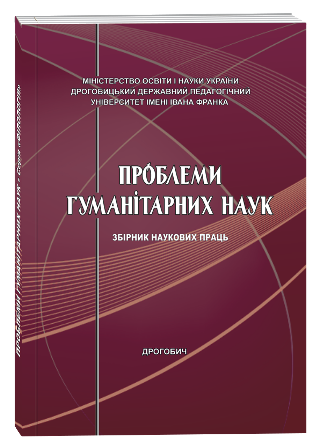TYPES OF GENDER INFORMATION REPRESENTED IN MEANING OF ENGLISH PHRASEOLOGY
DOI:
https://doi.org/10.24919/2522-4565.2022.49.9Keywords:
gender, stereotype, phraseology, phraseological units, linguistic view of the world.Abstract
The article considers some types of gender information represented in meaning of English phraseology. Gender stereotypes in society are presented. The author describes the reflection of gender information contained in the meaning of the phraseological unit of the English language. Semantic, stylistic, contextual and comparative analyzes were used as the main research methods in the article. The study identified some main thematic groups of phraseological units about women and men in English, which contain gender information: marital status, age, appearance, negative characteristics and work. The author analyzed nomination of gender-marked phraseological units and conducted a comparative analysis of some image, that includes the type of gender information. The study described the reasons for similarities and differences of gender information in the systems of female and male images of the English language. The analysis showed that phraseology is the model of collective ethnic consciousness. Therefore, gender stereotypes reflected in them preserve some features of national culture, reflect intersex relations and the attitude of society to each other. Every level of language system has a different gender marking: most often it is founds on the grammatical and lexical levels, in particular in word formation, less clearly it is in syntax. A special place in the study of the linguistic explication of the phenomena of masculinity and femininity is occupied by phraseology, the units of that represent established traditional assessments in a language in characteristics of “male” and “female” and their social roles. On the basis of the phraseological fund of the English language, stable combinations representing the gender mechanism of the language were analyzed. The author emphasize that the meaning of these phraseologies contains gender information, as they reflect gender differences.
References
Баран Я. А. Фразеологія у системі мови. Івано-Франківськ : Лілея-НВ, 1997. 176 с.
Вишнякова Ю. В. Лингвокультурологическое описание гендера в лексикографии (на материале анализа мифологических персонажей) : автореф. дис. … канд. филол. наук : спец. 10.02.19 / ЯГПУ им. К. Д. Ушинского. Ярославль, 2006. 19 с.
Гамулець Д. Гендерний аспект у сербській фразеології. Вісник Львівського університету. Серія філологічна. 2012. С. 219–226. Заваринська I. Ф. Лiнгвокультурна мотивацiя фразеологiзмiв з онiмним компонентом в англiйський, польськiй та українськiй мовах : автореф. дис. … канд. фiлол. наук : 10.02.17 / Нац пед. ун-т ім. М. П. Драгоманова. Київ, 2009. 19 с.
Захарина Г. Р. Отражение языковой картины мира во фразеологии с компонентом именем собственным (на материале английского, русского, татарского языков). Вестник Поморского университета. Серия «Гуманитарные и социальные науки». 2008. Вып. 9. С. 52–54.
Зыкова И. В. Способы конструирования гендера в английской фразеологии. Москва : Едиториал УРСС, 2003. 232 с.
Кунин А. В. Англо-русский фразеологический словарь / лит. ред. М. Д. Литвинова. 5-е изд., исправл. Москва : Живой язык, 1998. 944 с.
Першай А. Ю. Репрезентация гендерных отношений во фразеологии : автореф. дис. … канд. филол. Наук : 10.02.19 / Бел. гос. ун-т. Минск, 2002. 17 с.
Телия В. Н. Русская фразеология. Семантический, прагматический и лингвокультурологический аспекты. Москва : Школа «Языки русской культуры», 1996. 295 с.
Cambridge International Dictionary of Idioms. Ed. by E. Walter. UK: Cambridge, 1999. 587 p.
Longman Dictionary of Language and Culture. Ed. by B. Duckett. 3rd revised edition. Harlow : Longman (Pearson), 2005. 1680 р.
Oxford Dictionary of English Idioms. Ed. by John Ayto. N. Y. : Oxford University Press, 1993. 685 p.



